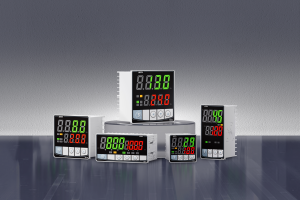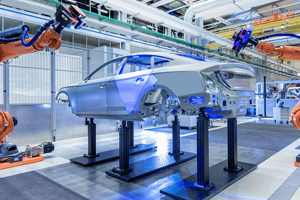Understanding PID Controllers: What Does PID Stand for in PID Controller?
Discover what PID stands for in PID controllers and how each component—Proportional, Integral, and Derivative—contributes to effective control systems. Learn about their roles, tuning methods, and advanced features in this comprehensive guide.
1. Introduction to PID Controllers
PID Controllers A PID (Proportional-Integral-Derivative) controller is an essential element in control systems, used widely across industrial automation and engineering applications. This component measures error as the difference between desired setpoint and measured process variable values by applying proportional, integral, and derivative correction factors as needed - this mechanism ensures system output follows desired trajectory while remaining stable with optimal performance and optimal stability.
2. Proportional (P) Component
A PID controller's proportional component, also referred to as its proportional gain or proportional output component (Kp), produces output proportional with current error value and Kp determines response magnitude to errors; higher proportional gains tend to provide larger correction for individual errors which helps improve response time; however if too great a proportional gain exists it could cause instability and oscillations within the system.
Practically, proportional controls help minimize error but cannot completely eradicate it. For example, in temperature control systems using proportional controls to manage temperatures, proportional controls could adjust heating element power according to temperature differences between desired and actual settings; however, residual errors known as steady-state errors remain.
3. Integral (I) Component of PID Controller
A PID controller's integral (I) component addresses steady-state errors by gradually integrating errors over time, while its integral gain (Ki) determines their contribution to controller output. By summarising past errors, its integral action ensures that output continues to rise until all errors have been eliminated from it.
Integral action can be particularly useful in systems in which proportional control alone cannot provide desired accuracy, for instance a motor speed control system; here, integral action helps adjust input from a motor so as to maintain desired speeds regardless of disturbances or load changes.
Derivative Component A PID controller's derivative component predicts future errors based on their rate of change; derivative gain (Kd) measures how this contribution contributes to output; using derivative components can dampen system response while decreasing overshoot and improving stability.
Practical applications of derivative action prove effective where rapid errors must be countered quickly; such as robotic arm control systems. A derivative component can help smooth out motion, avoiding sudden stops or sudden stops and assuring precise positioning.
4. Combining P, I and D Components
The true strength of a PID controller lies in its three components working in concert to provide a robust solution. Each part addresses different aspects of control for wide variety of applications - proportionally providing immediate responses when errors arise, integral eliminating steady state errors while derivative improving stability and response times.
PID controllers offer several advantages over other types of controllers. Their balanced approach provides accurate yet stable control, and PID's easy implementation and tuning make them popular choices across industries including manufacturing, automotive and aerospace.
5. Tuning a PID Controller
Tuning a PID controller involves adjusting proportional, integral and derivative gains until they achieve your desired system performance. Tuning correctly for optimal control is critical as incorrect settings could result in poor performance or instability; there are various tuning strategies such as manual tuning, Ziegler-Nichols method or software-based tools for PID tuning that you may use for optimal tuning results.
Manual tuning involves manually adjusting gains based on how your system responds, which requires an understanding of its dynamics. For a systematic approach to tuning using specific rules to set gains based on oscillatory response of your system. Software-based tools, like those found within MATLAB and Simulink provide automated tuning options which simplify this process while offering accurate results.
PID controllers may be enhanced with advanced features to enhance their performance in specific applications. One such enhancement is anti-windup, which prevents integral terms from amassing excessively when actuator saturation has occurred and thus helps avoid large overshoots while improving response to large disturbances.
Bumpless transfer, an advanced feature, provides for smooth switching between manual and automatic control modes in systems where manual intervention may be required during specific operations. It's especially helpful for systems where manual intervention must take place for particular operations.
6. PID controllers
come in various forms, such as Proportional-Integral (PI) and Proportional-Derivative (PD), respectively. While PI controllers are best for systems which do not need derivative action, while PD ones suit integral action only applications. Furthermore, certain PID controllers come equipped with filters on the derivative term to reduce noise sensitivity.
- Understanding PID in Temperature Controllers: Components, Functionality, and Applications
- How to Use a PID Controller in Simulink: A Comprehensive Guide























